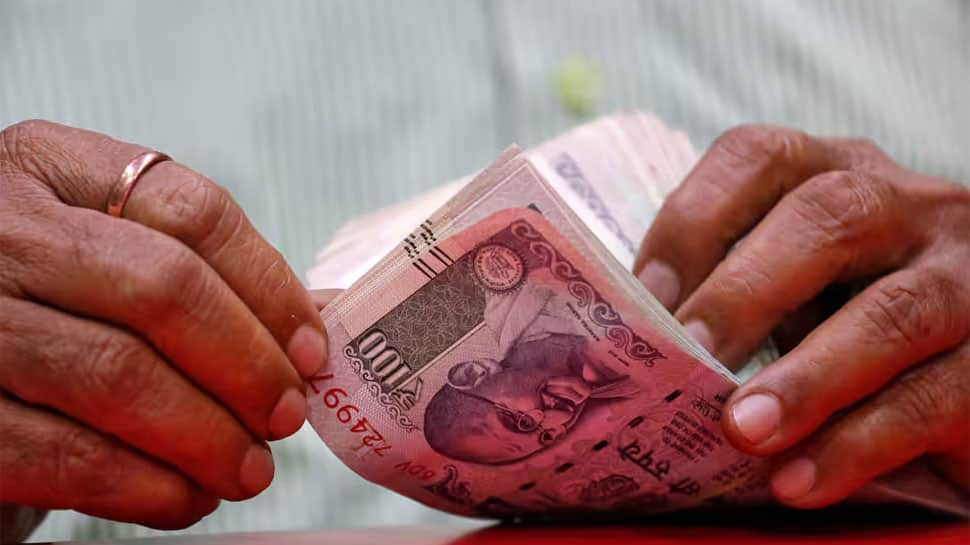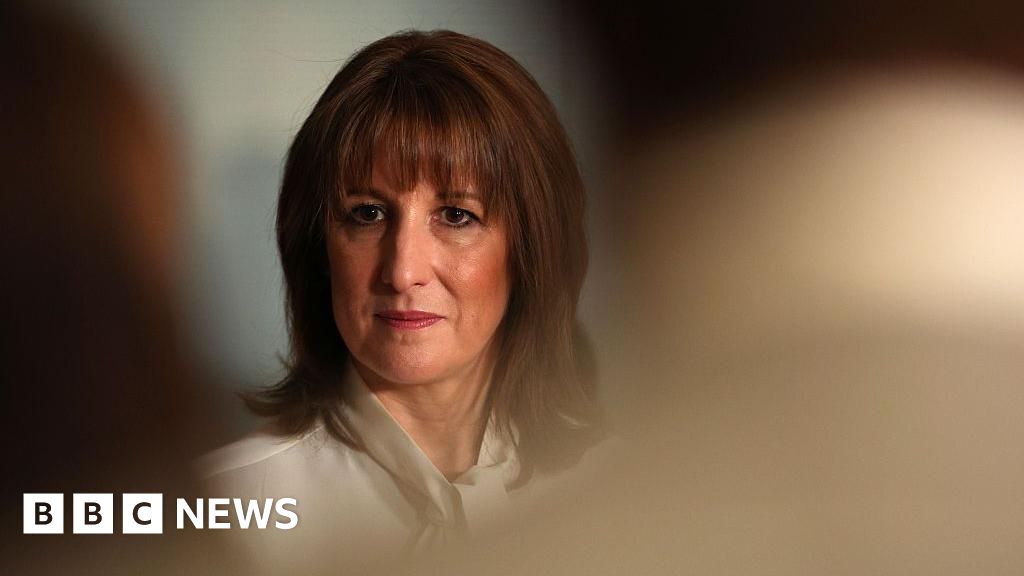Business
Experts reveal which tax increase will have ‘least damaging’ impact

The government is under pressure to raise revenues and balance the books ahead of November’s autumn Budget statement.
And new economic analysis has revealed which tax rise will be the better option for Chancellor Rachel Reeves to implement for the economy.
Income tax and VAT were compared.
Raising VAT could push down harder on people’s real incomes, while hiking income tax will be the “least damaging” option.
Analysis carried out by the National Institute of Economic and Social Research (NIESR) suggests that it would be harmful for the Chancellor to find other ways to raise tax revenue beyond the “main” UK taxes.
The economic think tank analysed the economic impact of raising income tax, corporation tax and value added tax (VAT).
Of the three, NIESR said raising VAT would have the biggest negative impact on the UK economy by lowering real personal disposable income (RPDI) by nearly 3 per cent and real gross domestic product (GDP) by nearly 1 per cent in the first year of the tax being applied.
A higher rate of VAT would also push up inflation more than the other levers because of the impact it would have on prices in shops.
Raising corporation tax – which is charged on the profits made by businesses – would have a smaller short-term impact but drag on the economy in the long run by reducing investment, according to the analysis.
On the other hand, hiking income tax would have the lowest impact, bringing down GDP by about 0.05 per cent in the first year after the tax is applied.
The scenarios in NIESR’s analysis are based on the assumption that the government aims to raise total net annual revenue by £30 billion by 2029-30.
This is how much Ms Reeves needs to raise to fill an estimated black hole in the public finances.
NIESR said the “least bad” option therefore was for the Chancellor to increase income tax at her next Budget.
The think tank acknowledged that doing so would mean the Labour government breaks its manifesto pledge not to raise taxes on “working people” – which it said was now widely interpreted to mean income tax, VAT, employee national insurance contributions, and corporation tax.
“We would argue that they could find other ways to raise tax revenue but doing so would be much more distortive, harming the economy in the longer run,” the report’s authors wrote.
Ed Cornforth, NIESR economist and main author of the analysis, said: “Our analysis clearly shows that a rise in income tax is the Chancellor’s least damaging, most reliable option for putting the economy on a sustainable, secure footing.
“VAT would put pressure on prices, an undesirable option given current inflation expectations, and additional business taxes would harm investment incentives, at a time when employer NICs have already dampened business confidence.
“Although it is politically unsavoury, avoiding raising income tax will force the Chancellor’s hand into worse options – tinkering around the edges simply won’t shift the dial.”
Business
Gold And Silver Prices Today, December 2: Check 24 & 22 Carat Rates In Delhi, Mumbai And Other Cities

Last Updated:
Gold Rate Today, December 2: In Mumbai, the price of 24-carat gold stands at Rs 1,30,200 per 10 grams, while 22k gold is available at Rs 1,19,350 per 10 grams.

Gold Price Today, December 2.
Gold Rate Today, December 2: After hitting a six-week high, gold prices cooled on Tuesday, as rising US Treasury yields and profit-taking weighed on sentiment ahead of US economic data likely to guide the US Federal Reserve’s policy path. In Mumbai, the price of 24-carat gold stood at Rs 1,30,200 per 10 grams, while 22k gold was available at Rs 1,19,350 per 10 grams. These rates do not include GST and making charges. Silver was available at Rs 1,88,000 per kg in the spot market.
On the MCX, gold fell by 0.26% to trade at Rs 1,30,306 per 10 grams for the February 5 contracts, whereas silver was trading higher by 1.70% to trade at Rs 1,78,940 per kg in the futures market in the morning trade.
In the international market, US spot gold fell 0.4% to $4,215.48 per ounce, as of 0228 GMT, after hitting its highest level since October 21 on Monday. US gold futures for December delivery were down 0.6% at $4,247.10 per ounce.
What Is The Price Of 22kt, 24kt Gold Rates Today In India Across Key Cities On December 2?
| City | 22K Gold (per 10gm) | 24K Gold (per 10gm) |
|---|---|---|
| Delhi | Rs 1,19,500 | Rs 1,30,350 |
| Jaipur | Rs 1,19,500 | Rs 1,30,350 |
| Ahmedabad | Rs 1,19,400 | Rs 1,30,250 |
| Pune | Rs 1,19,350 | Rs 1,30,200 |
| Mumbai | Rs 1,19,350 | Rs 1,30,200 |
| Hyderabad | Rs 1,19,350 | Rs 1,30,200 |
| Chennai | Rs 1,19,350 | Rs 1,30,200 |
| Bengaluru | Rs 1,19,350 | Rs 1,30,200 |
| Kolkata | Rs 1,19,350 | Rs 1,30,200 |
Ponmudi R, CEO of Enrich Money, said, “Gold and silver prices rose sharply, with gold touching a six-week high and silver rallying to fresh records as expectations of Fed rate cuts strengthened. Weak US economic data, a softer dollar index, and dovish Fed comments added pressure for policy easing. Continued contraction in the manufacturing sector also boosted rate-cut bets. Silver’s technical setup has turned increasingly bullish, prompting traders to add long positions. Market participants are now awaiting the ADP jobs report and the delayed PCE data for further cues.”
What Factors Affect Gold Prices In India?
International market rates, import duties, taxes, and fluctuations in exchange rates primarily influence gold prices in India. Together, these factors determine the daily gold rates across the country.
In India, gold is deeply cultural and financial. It is a preferred investment option and is key to celebrations, particularly weddings and festivals.
With constantly changing market conditions, investors and traders monitor fluctuations closely. Staying updated is crucial for effectively navigating dynamic trends.
About the Author

Haris is Deputy News Editor (Business) at news18.com. He writes on various issues related to personal finance, markets, economy and companies. Having over a decade of experience in financial journalis…Read More
December 02, 2025, 09:54 IST
Read More
Business
Pensioners Alert! Govt Asks Banks To Provide Pension Slip To Govt Employees On Monthly Basis

New Delhi: The Department of Pension & Pensioner’s Welfare (DoPPW) under the Ministry of Personnel, PG & Pensions has issued its latest Office Memorandum regarding Pension Payment Slip to all Central Civil Pensioners/Family Pensioners on monthly basis.
In its OM, the DoPPW has asked all banks to adhere to its previous order on issuance of pension slip. DoPPW highlighted that grievances are being still received in this office from Pensioners/Family Pensioners about the non-receipt of Pension Payment Slip.
“All CPPCs of Authorised Banks are once again instructed to invariably provide the pension payment slip to all central civil pensioners and family pensioners after credit of pension/family pension through various available modes including email,” DoPPW said.
The DoPPW further said that if email is not available, the same may be obtained from the pensioner so that the pension slip can be sent through e-mail also.
Business
OBR head’s resignation leaves potential landmines for Reeves

The shock resignation came for a very specific reason, but the OBR saga will continue with a series of decisions the chancellor will have to make over Richard Hughes’ replacement.
Firstly the Chancellor will have to find a respected and credible economist to run the OBR.
There are several candidates, who might fit the mould of fiercely independent bean counters.
The list will be carefully watched by the markets for any departure from the normal model. The problem is that there is some political pressure to do just that.
One of the points of tension was the refusal of Richard Hughes to give credit to the Government for “pro growth” policies.
Mr Hughes had said he would not score any policy unless it was material in its impact on the economy. In the event, none reached the 0.1% of national income threshold.
It is a careful balancing act, however.
Any perceived interference with the OBRs independence could impact market credibility too, and, for example raise UK government borrowing costs.
When I saw the now-departing chairman on the evening of the Budget last week, he was clearly mortified by the responsibility of his organisation for the early release of Budget information.
While it is no surprise to me that Mr Hughes took the honourable decision to resign for an error identified as the fault of a junior member of staff, it was not the only issue vexing him.
He was a fierce defender of the independence of his organisation from political and ministerial pressure – from right and left. That was seen during the Liz Truss mini budget episode, and in recent weeks too.
There had been a drumbeat of noise from the right, and the left and now from the centre too about the restrictions the OBR system placed on the freedoms of elected Governments.
The OBR was in some corners seen as an arm of a “woke deep state”, and by others as an “agent of austerity”.
There had, however, been tension over the Budget.
Changes had already been planned. The Chancellor had also announced that it would only respond to the OBR’s forecasts once a year.
Mr Hughes told me: “We’ll still be producing two full economic and fiscal forecasts looking five years out, twice a year, now and in the spring.
“But with this change of legislation, the government doesn’t feel obliged to respond to those forecasts with policy in the spring. It’ll be more like a health check on the economy and the public finances.
“There’ll be no loss of transparency from the forecast documentation that we’ll produce.”
The precise design of the new approach to the OBR’s forecast will matter. If there is a marked improvement in the public finances in spring, will the chancellor really avoid spending any “surplus” ahead of crucial local elections?
The OBR did around the Budget score an improvement to the UK economy as a deployment of AI by the end of the decade. The OBR also used new powers to initiate a tricky costing for the ballooning cost of special educational needs in England, inviting a backlash from some Cabinet ministers.
For some this underscores its ability like no campaign or Cabinet minister initiative, to focus Government priorities. Hughes denied the 35-member forecasting group was too powerful.
“The powers given to us are those given to us by Parliament in an Act of Parliament, and that’s to produce a forecast. Chancellors set their own targets. They set their own policies. Chancellors are in charge of £1.5 trillion worth of revenue and £1.5 trillion worth of spending.
“If they don’t want to meet their targets, they can change them, which we’ve seen chancellors do in the past as well. All we do is produce a baseline forecast, cost government policies when they give them to us, and we give them an assessment about whether we’re up there, in line and on track to meet those targets,” he told me.
In terms of the Government’s difficulties over the run up to this Budget, Mr Hughes may also take some important details of the timing of various claims around the state of the public finances to his gardening leave.
He had been due to address the Treasury Select Committee this morning, that has now been cancelled. He recognised the publication of his clarification table on Friday of the evolution of the forecasts was unusual.
Over five years at the OBR Richard Hughes faced five chancellors, and his relationship with all of them was designed to help promote UK economic stability.
The new relationship with a different OBR is an opportunity for the Government, but a big risk too.
-

 Sports1 week ago
Sports1 week agoWATCH: Ronaldo scores spectacular bicycle kick
-

 Entertainment1 week ago
Entertainment1 week agoWelcome to Derry’ episode 5 delivers shocking twist
-

 Politics1 week ago
Politics1 week agoWashington and Kyiv Stress Any Peace Deal Must Fully Respect Ukraine’s Sovereignty
-

 Business1 week ago
Business1 week agoKey economic data and trends that will shape Rachel Reeves’ Budget
-

 Tech6 days ago
Tech6 days agoWake Up—the Best Black Friday Mattress Sales Are Here
-

 Politics1 week ago
Politics1 week ago53,000 Sikhs vote in Ottawa Khalistan Referendum amid Carney-Modi trade talks scrutiny
-

 Fashion1 week ago
Fashion1 week agoCanada’s Lululemon unveils team Canada kit for Milano Cortina 2026
-

 Tech2 days ago
Tech2 days agoGet Your Steps In From Your Home Office With This Walking Pad—On Sale This Week




